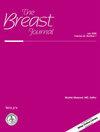Luminal A Breast Cancer: How Feasible is Omitting Axillary Dissection Without Neoadjuvant Therapy
Abstract
Background. Luminal A breast cancer has a good prognosis and the criteria for adjuvant and neoadjuvant chemotherapy (NAC) are not clear. The aim of this study was to present our results of upfront surgery and long-term survival in luminal A tumors as well as the rates of protection from axillary dissection. Material and Methods. 271 Luminal A breast cancer patients who had operated at our center were evaluated retrospectively. In patients with 2 or less sentinel lymph node (SLN) positivity who did not receive neoadjuvant therapy and underwent breast-conserving surgery, axillary lymph node dissection was omitted (OAD). Axillary lymph node dissection (ALND) was performed in patients with positive SLN who did not meet these criteria (axillary dissection after sentinel/ADAS). Results. While Sentinel Lymph Node Biopsy (SLNB) was performed in 212 (77.9%) patients, SLNB + Axillary Dissection (AD) was performed in 58 (21.3%), and direct axillary dissection was performed in 1 (0.8%) patient. OAD was applied to 18 (23.6%) of the positive patients. Discussion/Conclusions. ALND rates are still strikingly high in luminal A breast cancer treatment, despite the disease’s milder clinical course. In order to avoid complications of axillary dissection, patients should be considered for NAC as much as possible. Novel neoadjuvant or other therapy options are also required.


 求助内容:
求助内容: 应助结果提醒方式:
应助结果提醒方式:


